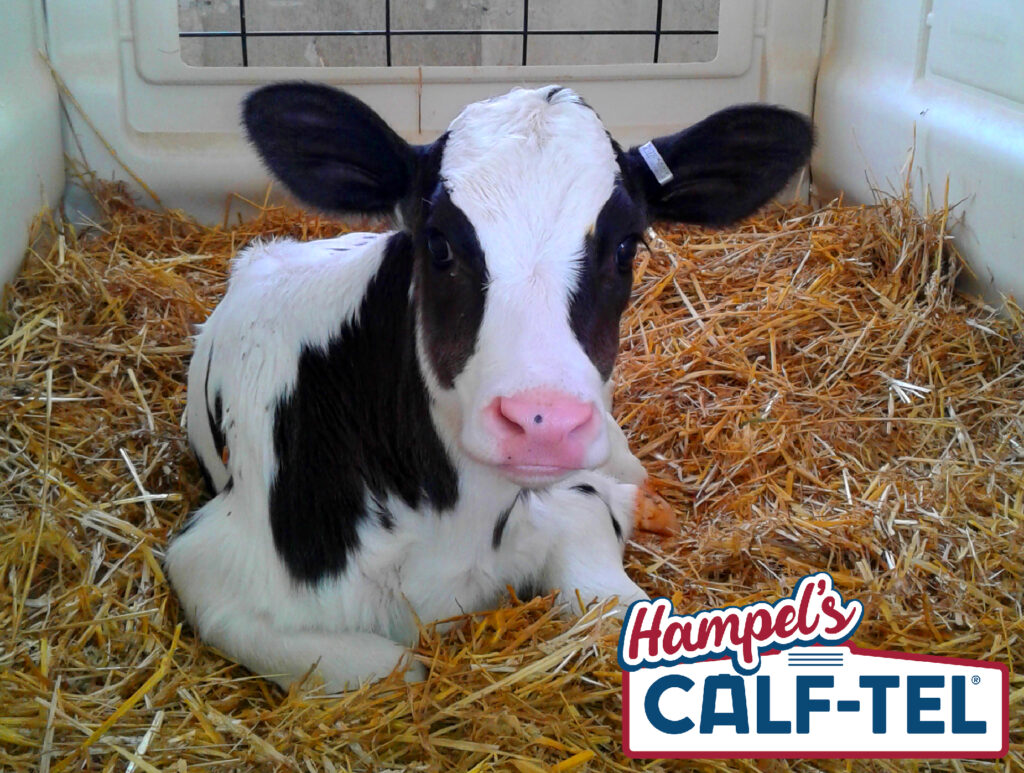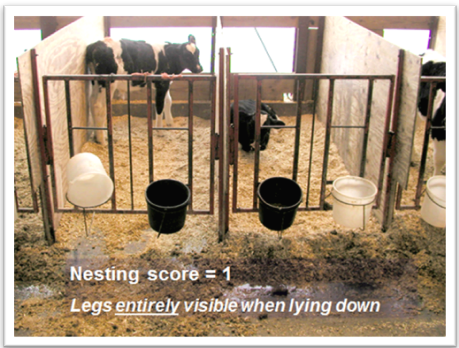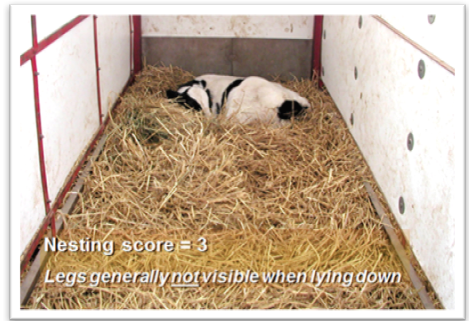by Kelly Driver

We all know how good it feels to snuggle into a clean, dry bed and breathe the crisp, fresh air that comes with the cooler evening temperatures as we head into the fall months. But let’s pause a bit and consider why these same things are just as important to our calves.
Proper housing provides a healthy environment for calves and includes four key elements: ventilation, comfort, isolation and economy, according to the CalfTrackTM Calf Management Training System from The Pennsylvania State University.
Check the Thermometer
First, let’s consider ventilation. How do we know if it’s acceptable to keep calves comfortable and healthy? Here is a quick checklist:
1. Kneel in the calf’s living area to test the air about 6 inches above the bedding, where the calf’s nostrils would be as they rest.
2. Do you feel fresh air movement?
3. Do you feel any drafts? If yes, be sure to block the openings that are creating the draft during cold weather.
4. Do you notice any odors, like ammonia or a sour smell?
As we have talked about in earlier blogs, newborn calves have a narrow thermoneutral zone, being most comfortable at 55-70oF. Because they are born with very little body fat to draw from for energy, it is vital to avoid both cold stress and heat stress for the youngest herd members. This chart from the CalfTrackTM program is a good visual reminder that extra measures need to be taken to keep calves comfortable when temperatures inside calf housing are outside this range.
| Age | Most Comfortable Range | Cold Stress at Temps Below | Heat Stress at Temps Above |
| Less than 1 month | 55 to 70oF | 50oF | 77oF |
| 1 month to weaning | 46 to 80oF | 28oF | 84oF |
Source: CalfTrackTM, The Pennsylvania State University
When the temperature inside naturally ventilated housing is no more than 10-15oF warmer than the outside temperature, the system is working properly.
Making the Bed Clean and Comfortable
If the housing area selected for calves is ventilated, free of drafts and well-drained, we can begin to prepare a clean and comfortable bed for them. It is recommended to start by disinfecting the area and allowing it to dry. After the disinfectant dries, add 6-10 inches of bedding. One way to gauge this is that the calf caregiver should be able to drop to their knees on the surface without pain. Some herds sprinkle hydrated lime on the rearing area prior to applying bedding at a rate of 1 pound per 4×8 foot area. I recommend consulting with the herd veterinarian to determine if this is necessary at your facility.
Research studies have compared different types of calf bedding – wood shavings, sand, and long stem wheat straw, as related to the growth and health of dairy calves. The study revealed that the wheat straw bedding could absorb the most moisture and also provided the most insulation for heat. Calves on wheat straw bedding had the highest average daily gain and the lowest reported days of scours of the three bedding materials evaluated. (Viney)
The University of Wisconsin-Madison has studied the correlation between calf bedding and respiratory disease. A “nesting score” system was developed to compare results of different bedding volumes used. A nesting score of 3, where a majority of the calf’s legs are not visible in the bedding, resulted in a significant reduction in the prevalence of respiratory disease.


While feeding calves each day, be sure to inspect the bedding. Clean or top-dress with fresh bedding to assure that it remains dry. Keeping the bedding fresh and dry goes a long way toward keeping calves healthy, comfortable and clean. Dry, well-fed calves are also much less susceptible to the effects of cold stress as temperatures drop.
Ammonia is Bad
Ammonia gas is very harmful for a calf’s natural defense system in the trachea. Tiny hair-like fingers, or cilia, line the trachea, working to push foreign materials that the calf has inhaled up and out of the trachea. These cilia work in a wave action and serve as a defense system against respiratory infections. But this natural system can be weakened by persistent exposure to relatively low ammonia levels, allowing pathogens to enter the lungs, as the wave activity of the cilia are disrupted. This leaves calves at a higher risk for bacterial respiratory illness.
Many positive conditions exist in calf housing for the microbial activity that releases ammonia gas. Urine provides both nutrients and liquid, the bedding material often provides a favorable pH environment, and calves warm the soiled bedding when resting. (Leadley)
How do we slow down the ammonia causing bacteria? It’s as simple as clean dry bedding. Making sure calf housing areas are well drained prior to bedding is the first step. Then kneel in the bed for one minute, if your knees get wet, it is not dry enough to slow down ammonia production. Adding plenty of clean, dry bedding will serve two purposes: keeping calves clean and creating anaerobic conditions unfavorable to bacterial growth.
Does It Make Sense
Calf housing needs to make sense for the operation. Is it cost effective to build and maintain? Does it allow for timely and efficient care of the calves? Is it well-ventilated and comfortable for the calves? Is it easy to manage for the calf caregivers? As always, we suggest a discussion with both the herd veterinarian and calf care team members as any updates or changes are considered.
Kelly Driver has been involved in the New York dairy industry all her life. In addition to raising dairy calves and replacement heifers, she is the Eastern Territory Manager for Calf-Tel. Feel free to contact her at kellydriver@hampelcorp.com with your calf questions or suggest a topic you would like covered in a future blog.
Resources:
- Leadley, S. & Sojda, P. Ammonia is bad for calves. Calving Ease. April 2005. Retrieved from atticacows.com/library/newsletters/CEApril05.pdf
- The Pennsylvania State University CalfTrackTM Calf Management Training System. Retrieved from https://extension.psu.edu/calftrack-calf-managemen…
- Viney, Kaylee. The importance of calf bedding. Retrieved from https://crystalcreeknatural.com/the-importance-of-…
Courtesy of our dealer – CRI REPRODUCCIÓN ANIMAL MÉXICO SA DE CV.
